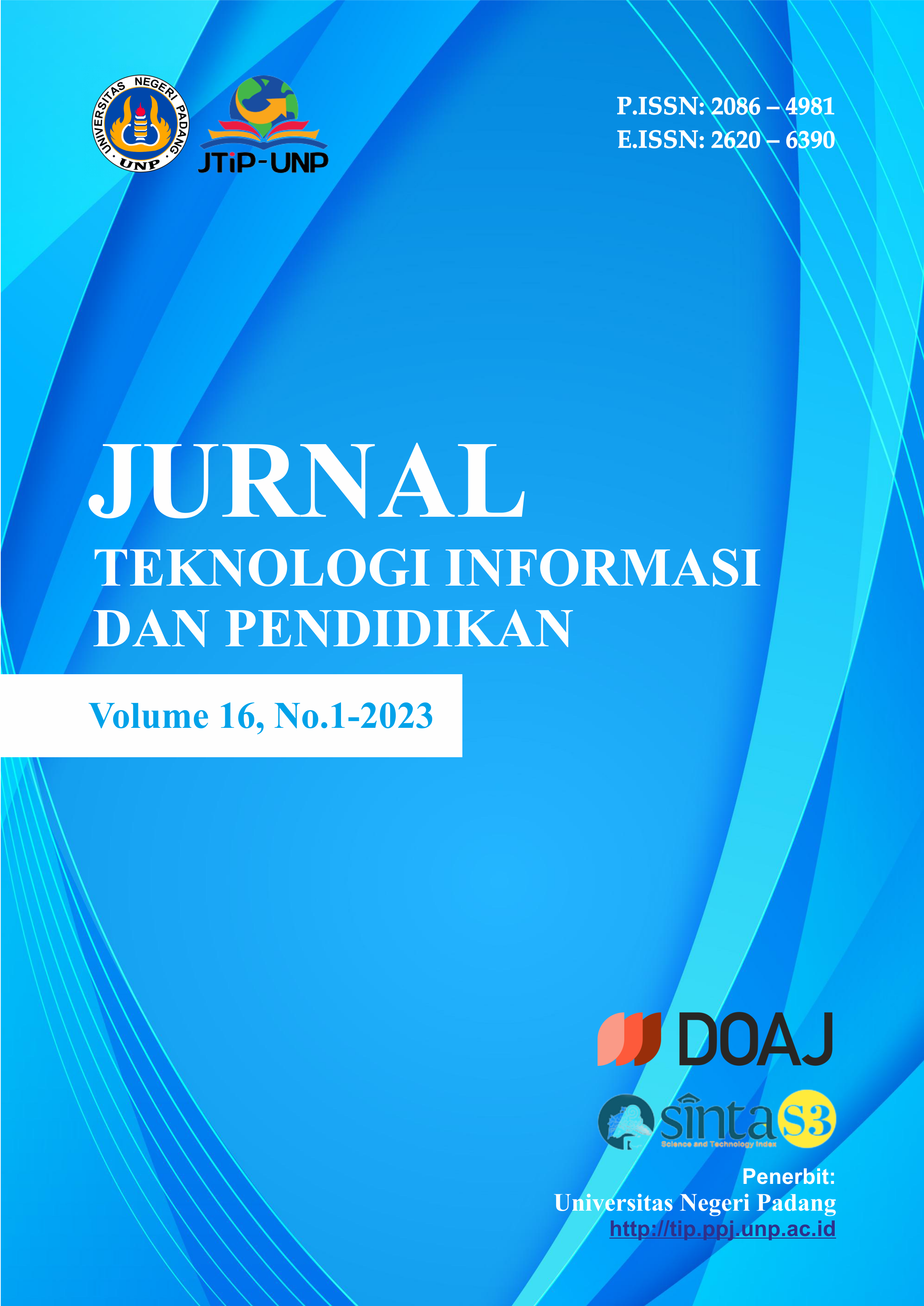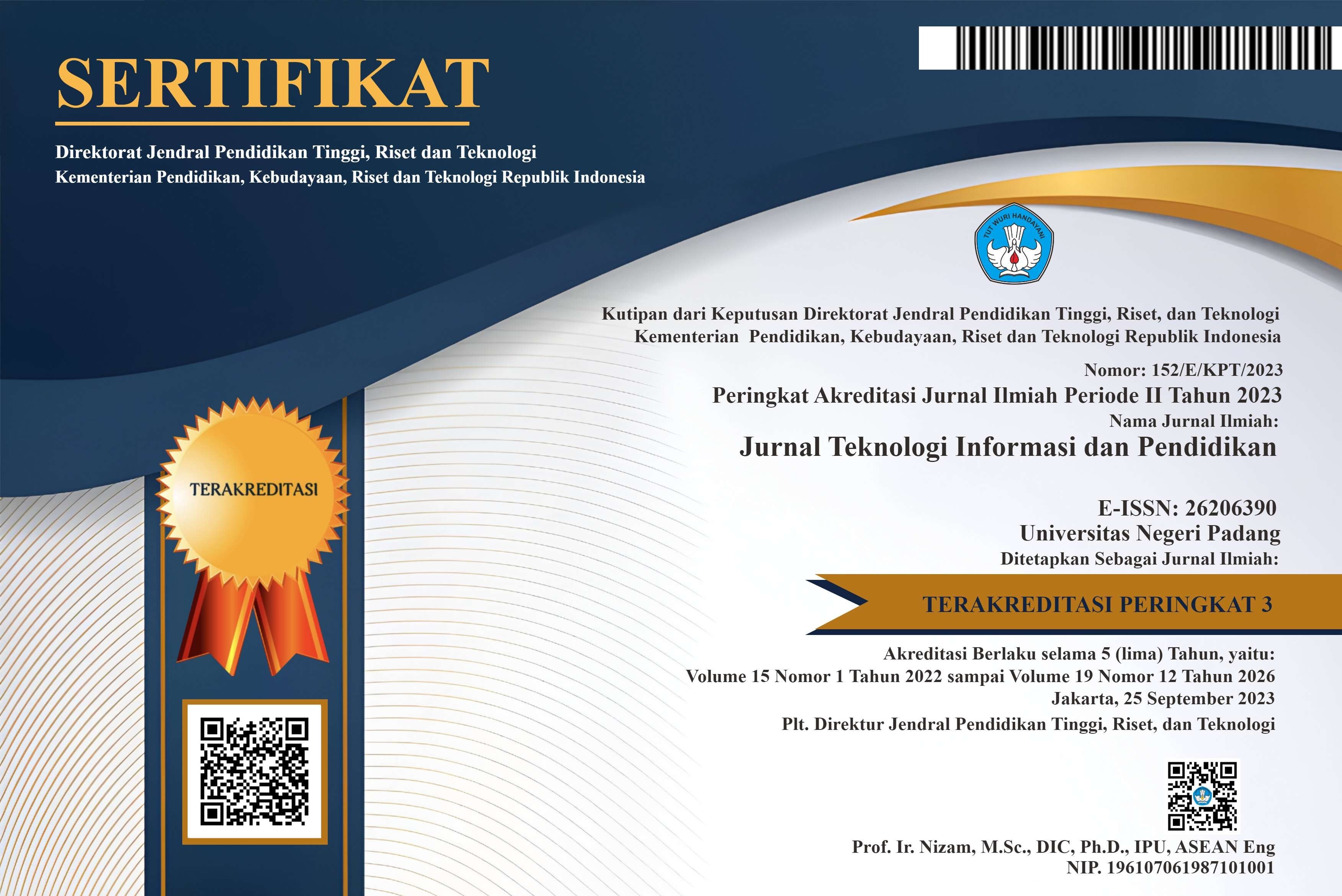Design of Information System for Outpatient Emergency Room Eligibility Letter to Support BPJS Claim Reporting
DOI:
https://doi.org/10.24036/jtip.v16i1.717Keywords:
Outpatient, Emergency Room, Eligibility Letter, BPJS, Claim ReportingAbstract
The advancement of technology in this era has had a significant impact on various fields, including healthcare. Hospitals strive to provide the best service to their patients so that they can get the best solution to their illnesses. A good hospital can be seen from the services provided to its patients. This research aims to produce an information system for creating patient eligibility letters in the emergency department. The method used in this research is a qualitative method with a descriptive approach by conducting data collection stages through interviews, observations, and literature studies, and the method used for developing the device is the System Development Life Cycle (SDLC) method. From this research, several problems were found in processing the creation of patient eligibility letters, namely the creation of eligibility letters still uses claim that has not been bridged with sims, causing the process of creating patient eligibility letters to take a long time, thus affecting the quality of healthcare services in the hospital's emergency unit. The suggestion given is the need for a redesign in the sims system to be bridged with vclaim.
References
[2] Z. Fiyan and R. Marta, “Design and Build a Web-Based Public Service Administration System Using the CodeIgniter Framework,” Jurnal Teknologi Informasi dan Pendidikan, vol. 15, no. 2, pp. 74–86, 2022.
[3] S. Setiatin and Y. Syahidin, “Perancangan Sistem Informasi Penyimpanan Rekam Medis Rawat Inap Berbasis Elektronik,” Jurnal Manajemen Informasi Kesehatan Indonesia (JMIKI), vol. 5, no. 2, pp. 181–194, 2017.
[4] U. K. Nisak, “Buku Ajar Stastistik di Fasilitas Pelayanan Kesehatan.” Universitas Muhammadiyah Sidoarjo, 2020.
[5] H. Ariyani and I. Rosidawati, “Literature Review: Penggunaan Triase Emergency Severity Index (ESI) di Instalasi Gawat Darurat (IGD),” Jurnal Kesehatan Bakti Tunas Husada: Jurnal Ilmu-ilmu Keperawatan, Analis Kesehatan dan Farmasi, vol. 20, no. 2, pp. 143–152, 2020.
[6] B. Marâ, U. Sudjana, and A. Suryaman, “Perlindungan Pasien Dalam Pelayanan Kesehatan Oleh Fasilitas Kesehatan Bpjs Di Kota Bandung Dihubungkan Dengan Undang-Undang No. 24 Tahun 2011 Tentang Badan Penyelenggara Jaminan Sosial Dan Peraturan Menteri Kesehatan No. 71 Tahun 2013 Tentang Pelayanan Kesehatan Pada Jaminan Kesehatan Nasional,” HERMENEUTIKA: Jurnal Ilmu Hukum, vol. 4, no. 1, 2020.
[7] Chanafi, “Cetak Laporan SEP Dengan Mudah,” trustmedis.com, 2022.
[8] A. R. Handayani and R. I. Sudra, “Tinjauan Penggunaan Rekam Medis Untuk Klaim Bpjs Pasien Rawat Inap Di Rsud Banyumas,” 2017.
[9] I. W. Suwendra, Metodologi penelitian kualitatif dalam ilmu sosial, pendidikan, kebudayaan dan keagamaan. Nilacakra, 2018.
[10] H. Wijaya, ANALISIS DATA KUALITATIF: sebuah tinjauan teori & praktik. Sekolah Tinggi Theologia Jaffray, 2019.
[11] T. A. Yasifa, Y. Syahidin, and L. Herfiyanti, “Design and Build Information System for Bpjs Polyclinic Claim File Completeness At Muhammadiyah Hospital Bandung,” Jurnal Teknik Informatika (Jutif), vol. 3, no. 4, pp. 1089–1097, 2022.
[12] H. Ramadhanti, Y. Syahidin, and D. Sonia, “Disain Sistem Informasi Retensi Rekam Medis Pasien Rawat Inap,” Explore: Jurnal Sistem Informasi dan Telematika (Telekomunikasi, Multimedia dan Informatika), vol. 12, no. 2, pp. 90–100, 2021.
[13] A. Afrina and N. H. Adi, “A Design of Practice Activities Cloudstorage, Promotion and Protocol,” Jurnal Teknologi Informasi dan Pendidikan, vol. 14, no. 2, pp. 151–157, 2021.
[14] H. Hartini, S. Primaini, N. Nurhayani, and S. N. Darfero, “Pengembangan Transaction Monitoring Pajak Berbasis IoT Dengan Fitur Script Auto Reboot Studi Kasus: PT. Pinisi Elektra,” Jurnal Informatika Global, vol. 12, no. 1, 2021.
[15] Dhea Ardina, “Mengenal Apa itu Software Development Life Cycle dan Metode nya,” it.telkomuniversity.ac.id, 2022.
[16] R. Astri, “Perancangan Aplikasi E-Tourism untuk Mendukung Pariwisata Kota Padang,” Prosiding SISFOTEK, vol. 4, no. 1, pp. 142–146, 2020.
[17] E. S. Eriana, R. Subariah, and S. Farizy, “TESTING & IMPLEMENTASI SISTEM.” Unpampress, 2022.
[18] I. Rianto, Rekayasa Perangkat Lunak. Penerbit Lakeisha, 2021.
[19] R. Z. Diana, G. P. Kusuma, and H. N. Prasetyo, “Aplikasi Akademik Dan Laporan Periodik Perkembangan Siswa Sekolah Menengah Atas Berbasis Web,” eProceedings of Applied Science, vol. 1, no. 3, 2015.
[20] D. M. Balerite et al., “An automated water consumption management system with water leak detection using mobile application,” South Asian Journal of Engineering and Technology, vol. 12, no. 1, pp. 111–120, 2022.
[21] S. Li et al., “A dataflow-driven approach to identifying microservices from monolithic applications,” Journal of Systems and Software, vol. 157, p. 110380, 2019.















.png)














